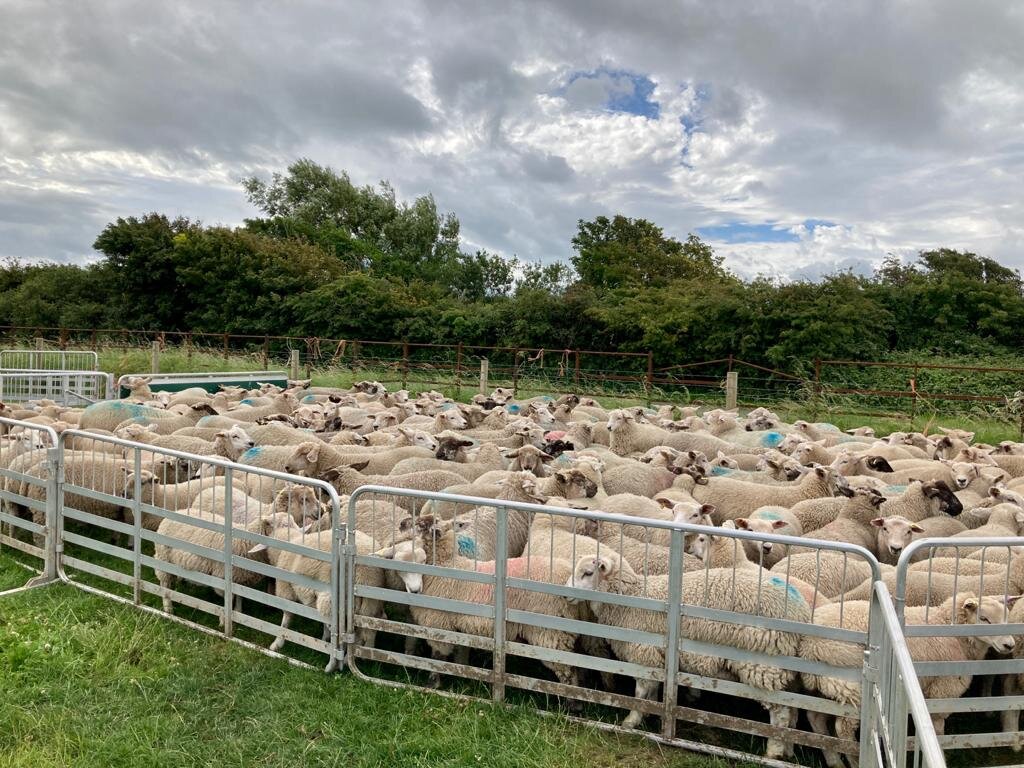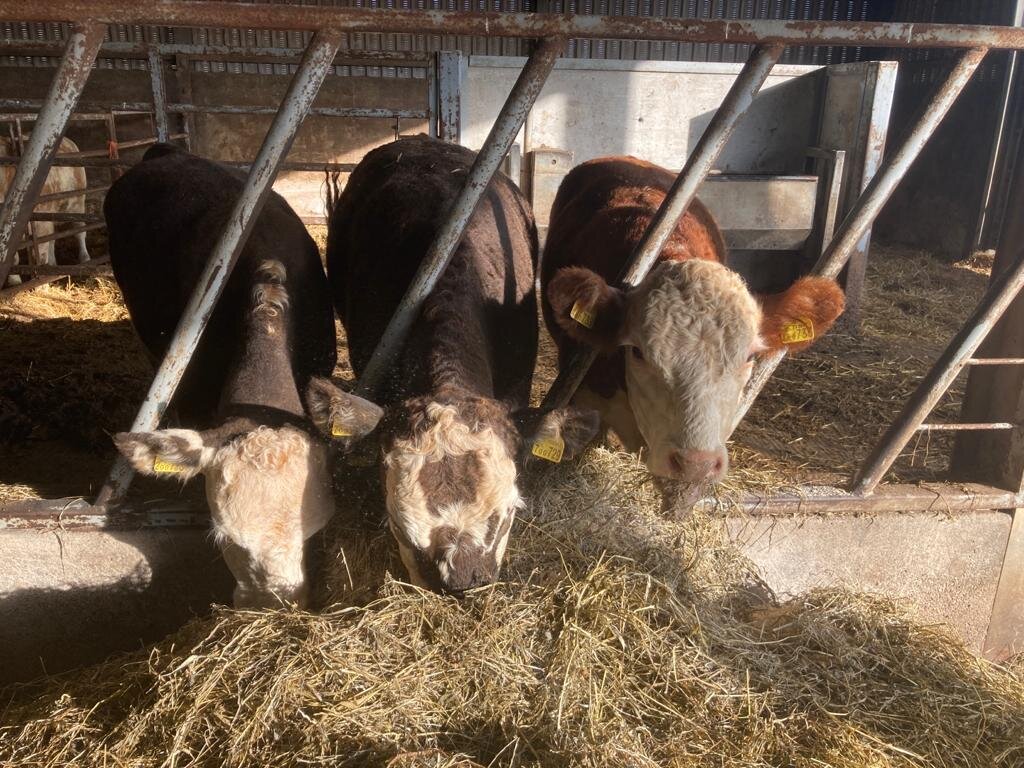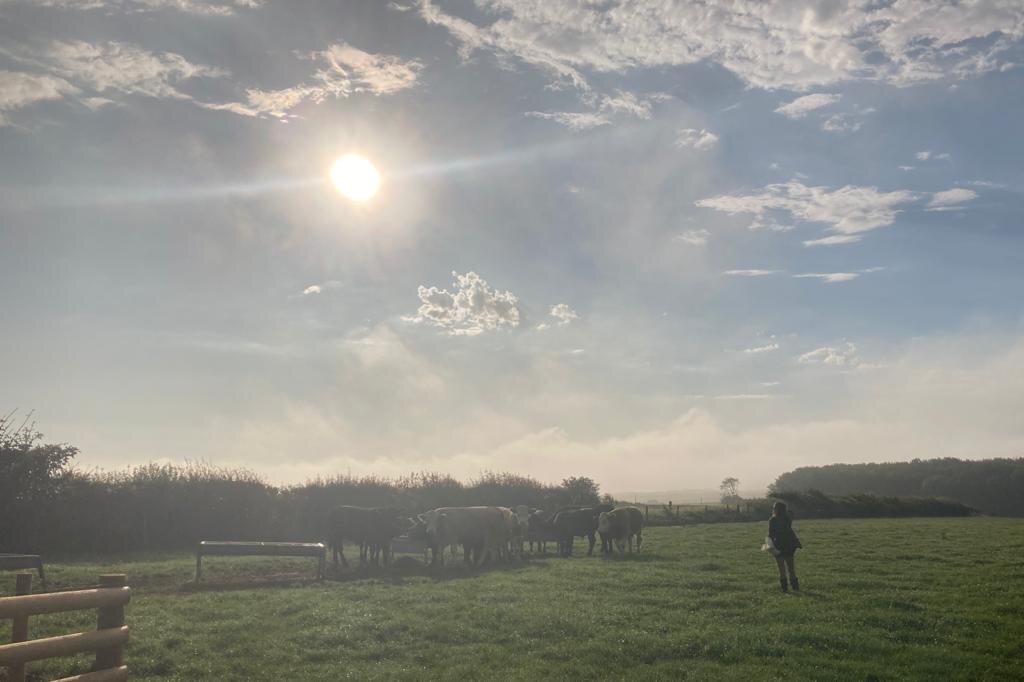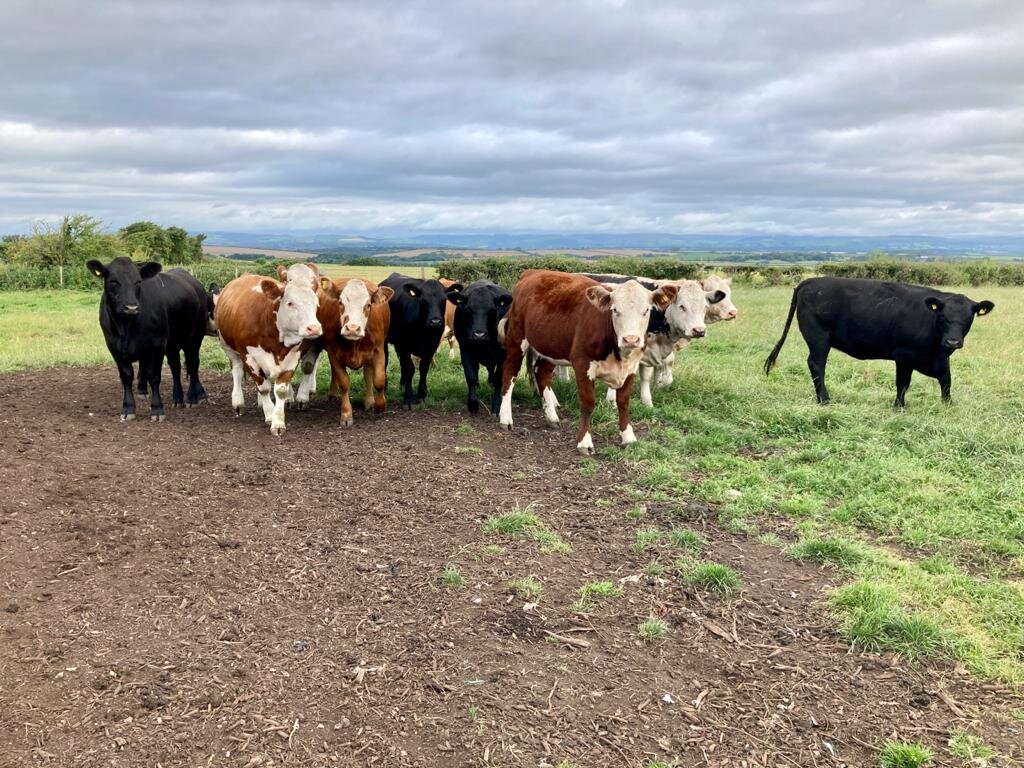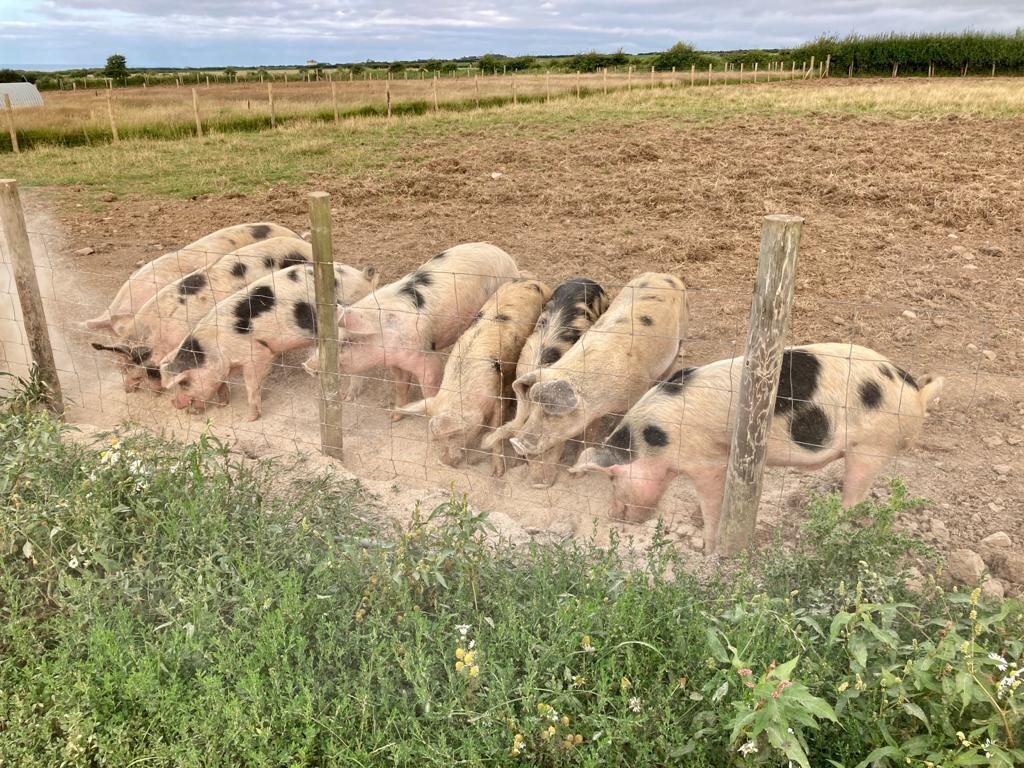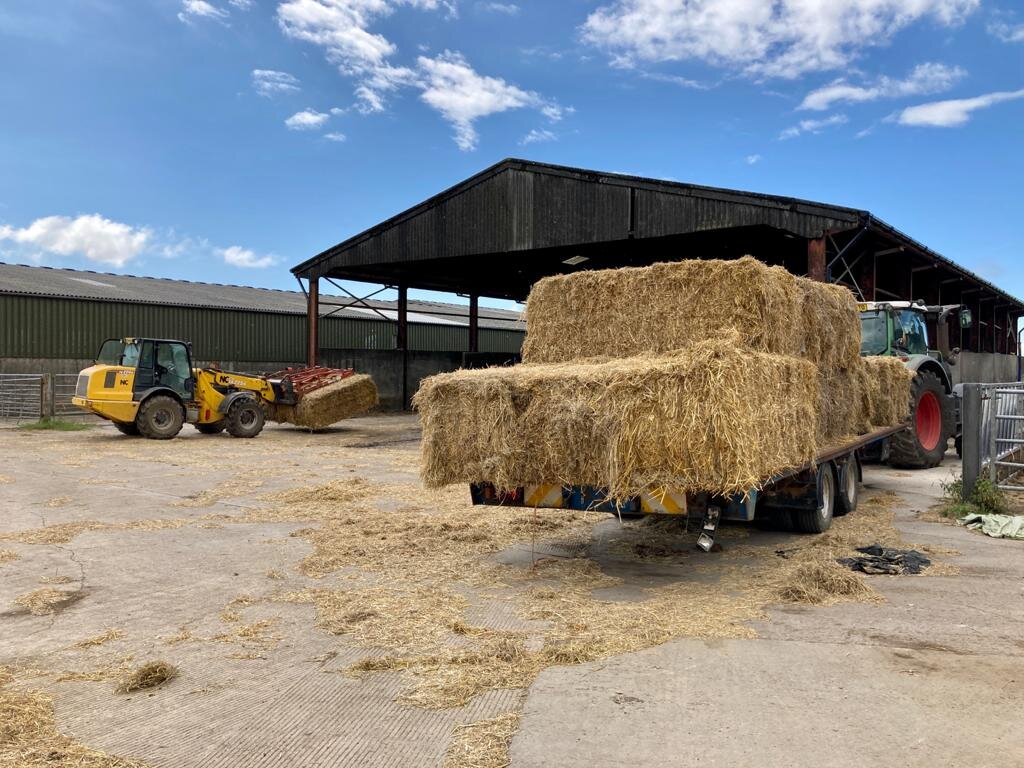Farm Volunteering
If you are interested in farm volunteering or doing work experience on the farm get in touch by phone or email. If you are considering a career in farming, or you are considering a career change into agriculture/ farming volunteering on a farm is a great way to gain an insight into farming life.
What to Expect:
You will need to be able to get to the farm at 7.30am, our local bus does not get to us earlier enough, so you would either require your own transport or a kind friend. All interested people would need to guarantee a minimum of 7 days, this can either be in one block or across a number of months.
As a mixed farm we have a range of enterprises, livestock, veg, butchery & arable. Work flows fluctuate throughout the year and seasons so get in touch if you would like some practical experience.
You need to be prepared to work in all weathers, hot, cold, raining, snow etc. Wear sensible clothing and footwear. We recommend bringing water proof trousers as well as a jacket.
Accommodation:
If you are not local to us we can provide free self catering bunk house/ hostel style accommodation, which is about a 15/20 minute walk (2min car journey) from the farmyard. This accommodation is only available to over 18’s. You will need to provide your own bedding and food.School & University Students
SCHOOL & UNIVERSITY STUDENTS
Images above by Emily during her time with us in August 2020
The minimum age for volunteering with us is 16 year olds. All interested people will need to guarantee a minimum of 7 days, this can either be in one block or across a number of months. We find 7 or more days gives a good overview of the farm. In addition to this we find both parties get more out of the whole experience.
You need to be prepared to work in all weathers, hot, cold, raining etc. Wear sensible clothing and footwear. We recommend bringing water proof trousers as well as a jacket. As well as working with livestock, you will be doing general labouring, cleaning out barns, power washing sheds etc.
Our lambing season is from the start of March to mid April, we are keen to have work experience over this period, but are happy to have people at anytime of the year.
Please Note: We prefer to hear from students directly, rather than their parents. Additionally, we do not take veterinary students for their pig placements.
PREVIOUS FARM VOLUNTEERING TESTIMONIALS
Below are some blogs of people who have done some experience with us.
Christine did farm volunteering with us for a week of lambing with us in 2022….
For the love of lambing
It’s 7pm on Sunday the 6th of March and I’m in the barn with Graham and a sheep that’s due twins but has only ‘dropped’ one. A few hours ago I arrived at Slade farm and Polly gave me a rapid paper-based refresher on how to deliver lambs in trouble.
Now it’s time to put that into practice. With the sheep on its side in the straw, and its first lamb already stumbling around, I feel for the second lamb inside her as carefully as I can. One of the most surprising things about lambing is how hot a sheep is when you’ve got your hand inside them. I feel for the lambs front feet and head, then pop the first, then second leg out and pull. The lamb slips out, fresh gooey life. She’s a bit yellow, a sign she got distressed. Mum sheep sets to work licking her new lamb clean.
The first night
On the first night at Slade farm I assisted a few different sheep with Graham as the head midwife. The sheep are kept in a few different places on the farm: wherever there’s space. We wander around the farm with a torch under a cold, clear night sky and canopy of stars, our wellies and the mud making thick noises at our feet.
It's not just sheep!
Over the week I’m there I help in the evenings and on the days I have off my regular job. The following day, Monday I arrive in the morning and meet Ffion, one of the full-time workers on the farm. She instantly makes me feel welcome and it surprises me when she says she doesn’t like people. I think that’s just in comparison to how much she loves the animals. She’s dedicated, hard-working and enthusiastic but still somehow manages to be down to Earth. Ffion is 28, has long hair and a nose ring, not the typical image that springs to mind when you think of a farmer. We chat while we bag up the feed for the pigs, barely dust fills the air in the draughty old stone building.
Slade farm is a traditional mixed farm with pigs, sheep, beef cattle and vegetables. It’s also organic and a closed system. This means that all the food and bedding for the animals is grown on the farm, and the manure and old straw bedding is used to fertilise the fields. I say this like I know what I’m talking about, I learnt all this while on the farm.
Variety is the spice of life!
When all the feed is bagged we go down to see the pigs - ginger pigs with black spots. Ffion introduces me to Brian, one of the pigs who was a bit sick recently but with some TLC and a few bananas has made a full recovery. Ffion jumps in the run with them and gives Brian a good scratch. The rest of the day is spent feeding and watering all the animals, changing the bedding and iodine-ing the lambs umbilical cords so they don’t get an infection. That’s my favourite part, the lambs, they are quite happy to be picked up and make quiet little grunting noises, utterly adorable. I leave around 6 and go down to the local beach in time to watch a spectacular sunset.
It's a Great way to meet Like-Minded People
Later in the week I meet two of the other volunteers: Matt and Henry. Matt is a professor of bio-medical science and Henry is a high-flying chef who works in Michelin star restaurants. Both have ambitions to own a small-holding and want to get some experience to supplement their reading and YouTube videos. Meeting interesting people is an added bonus I hadn’t anticipated. Polly & Graham, the farmers, have interesting previous lives as high-flying professionals in London. They’ve opened their farm life and business to strangers through volunteering and initiatives like ‘lambing-live’ where those who buy veg boxes can visit the sheep and lambs on a Saturday morning. I enjoy feeling like I’m ‘on the inside’, handing lambs to the children and answering questions as best I can.
It's More Than Just Work Experience
I find it interesting that so many people from so many different walks of life are drawn to farming in one way or another. For me it’s because it feels tangible, an important job creating the food we depend on to survive. But it’s more than that. Late at night in the sheds, with the animals sleeping and no one else around there’s a calm in the stillness, it’s not empty or silent or lonely, it’s a comforting, pleasing quiet. The shed is warm despite being open to the elements on the sides, the sweet golden straw rustles as animals shift in their sleep, the bull draws deep, slow breaths, it’s breathing like the waves on a shore.
All Good Things Come to an End
At the end of the last day all the volunteers, Ffion and Leon, the lad who works the weekend, walk down to the end of a track on the farm. We drink beer with a view over the fields to the sea at Southerndown, the fields full of sheep we’ve helped lamb. It’s a cold, grey day but the weather doesn’t matter.
My time on Slade farm was one of those concentrated experiences, where the memories seem to fill more than the one week I was there. I’m really grateful to Polly and Graeme and their family for everything, especially offering farm volunteering placements. I can’t wait to go back, assuming they’ll have me!
Matt did a week farm volunteering with us on the farm in 2021, have a read of his blog below & see what he made of it!
Where Does a Sheep Keep its Internal Organs?
That is a question I often asked myself at the beginning of March, usually when I was up to the elbow in a ewe that was having a problem delivering triplets. Two had been safely helped out and the third was somewhere in there. OK, so, three lambs. Big lambs. How on earth was there any room for things like liver and intestines and such that ought to be there?
Great to be Back
I was spending a week at Slade Farm, as a volunteer during this year’s lambing season. Polly and Graeme had advertised for volunteers before Christmas and I jumped at the chance. I had spent a day at the farm two years ago and got the chance to help deliver two sets of twin lambs, so I knew I wouldn’t be squeamish and didn’t mind the bodily fluids (I now know those two deliveries were easy ones!).
Last year, we took on three pet lambs (in other words, lambs that had been, for one reason or another, rejected by their mothers and hand-reared) so I had a little experience with sheep. But that was it. I wanted a crash-course in lambing and sheep management, and I also wanted the sort of life experience I could never have got growing up in the city (I lived in London until I was 43). Well, I got it.
Its a Busy Time Of Year
Seven days, 7.30am to 5pm (theoretically – sheep have an amazing ability to know when you are just about to go home and then start giving birth). A break for lunch to eat a sandwich. Other than that, it was non-stop. The routine usually involved feeding and watering the pens holding the individual ewes that had given birth most recently, and their lambs, assume there was not a ewe needing urgent attention first thing.
Then there were lots of other jobs to do during the day – applying iodine to the umbilical cord and navel of the new lambs to prevent infection, giving a bottle to feed to any lambs who needed extra (for instance, if a ewe had twin lambs but only one working udder), or helping load up ewes and lambs into the trailer who were old enough to leave the lambing sheds and go back out to the fields. And of course, in between all that there were regular checks on all the sheep to spot any who might be going into labour (has their behaviour changed, have the waters broken) and trying to spot any who might be having problems. Most of them got on with it by themselves without any need of intervention.
What's Involved?
All one had to do was wait until the first lamb arrived and then put it and the ewe into a pen. But every so often Polly or Graeme would say ‘Hmm, that one does not look right’ and it would be time to intervene. Pen the ewe up, tip it on to its side, and (under supervision) give an internal examination. And this is where the effort shifted from purely physical to a combination of physical and mental, as you try to figure out, entirely by touch, why this delivery is not happening......
What can I feel? Is that a foot? Yes, OK, I can feel a hoof. Is it a front foot or a back foot? (Top tip: front legs bend like a C, back legs bend like a Z). OK, it’s a front foot – and there is another one. Is there a head? No. That can’t be right. Find the top of the front legs, find the shoulders, no head. Must be bent down between the legs – yes, got it! OK, carefully get my hand under the jaw and gently bring it back up in line with the legs. Now, bring the legs and head, a bit at a time, through the cervix, and here it comes. Pull the lamb out in an arc. Got it! Rub the chest, clear the mucus from its nose, give it to mum. Right, find the next one…….
A Steep Learning Curve
Farm Volunteering is a crash course with a steep learning curve. By the time I had spent a week at the farm, I had dealt with most of the common problems, I think, that one can encounter lambing, and I was confident I could deal with them.
The most satisfying two deliveries were one triplet which I dealt with completely single handed, and a second (my last one of the week) which I was able to recognise was a breech birth and was able to reposition the legs so I could deliver it (you have to bring the back legs up from under the lamb one by one, protecting the wall of the uterus by cupping the hoof in your hand, and then deliver the lamb back feet first). What I cannot do – and I think it will take a long time to acquire this skill – is know when it is right to intervene. But hopefully that will come.
I learnt a huge amount in my week at Slade Farm, and had many more new and amazing experiences than I have space to write about. But it was exhausting. My fitness watch tells me I was burning up to 4000 calories a day. I walked 55 miles in the week, just being around the farm. The time between getting home at the end of the day and going to bed was short and dedicated entirely to eating.
It was one of the most tiring and rewarding weeks of my life and I can’t wait to do it again next year.
